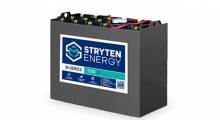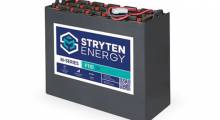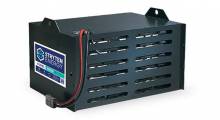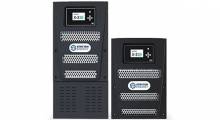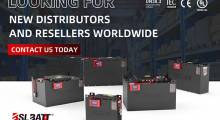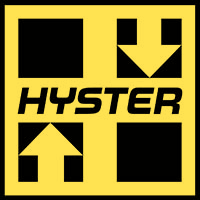If you hear some scuffling out in the battery charger room, go take a look.
No, it’s not mice.
But it might be some of your people with laser tape measures wondering out loud how to better use the space. That is, if your lift truck fleet’s lead acid batteries were replaced by lithium-ion (Li-ion) batteries. Really?
Yes, it’s a possibility. A very distinct one, actually.
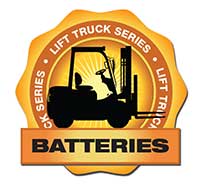
Electric lift trucks account for more than 55% of the so-called national fleet. And a range of influencers are pressuring to increase that number. It certainly isn’t getting any smaller.
Lead acid is the standard battery today, accounting for more than 60% of the market. Lithium-ion accounts for the balance.
That said, are lead acid batteries the best way to go in new facilities? Is a switch out worth it? That’s a decision you’re going to have to make at some point.
By the way, lift trucks are not the only target for lithium-ion. It’s also a choice for automatic guided vehicle (AGVs) and autonomous mobile robot (AMRs) fleets.
“Now, don’t get the idea that lead acid batteries are going away any time soon,” says Harold Vanasse, senior director of marketing for global motive power at EnerSys, supplier of both types of batteries. “However, the action in batteries today is a microcosm of what’s hot in materials handling today,” says Vanasse.
“The two major trends here are automation and electrification,” Vanasse says. “Reliability, cost efficiency and the need to have fewer people touching devices are critical here. Operations need less hassle, more run time, and simple, operational resilience,” says Vanasse.

Pros and cons
As you already know, lead acid batteries have lots of requirements.
Lead acid requires a charger room. And 8 hours to charge. And another 8 hours to cool down. So, you’ve probably got two or maybe three sets of batteries for each lift truck out on the floor. Not to mention staff and a long list of safety requirements to protect people and equipment.
Lithium-ion dispenses with all of that. The chemistry even opens the door to opportunity charging at designated stations scattered in an opportunistic pattern around the facility. They can be used when a lift truck driver is on break or otherwise able to have a few minutes of downtime. In any case, most lithium-ion batteries require only an hour to fully charge.
Not a bad start
So far, we’ve focused on the batteries themselves. But they are only a means to an end. Just ask Sheel Sanghvi, Nyobolt’s head of market development. “Battery technology is all about maximizing the number of picks or moves per hour,” Sanghvi explains.
Tom Nguyen, vice president of business development at Inventus Power, expresses that as vehicle uptime. By the way, Inventus Power has been primarily focused on lithium-ion batteries for AGVs and AMRs, says Phu Tran, global product manager. Faster charging capabilities and increased power delivery are desired needs for mobile powered equipment, Tran says.
At the Modex show this month, Inventus Power will also shine a light on its move to lithium-ion batteries for Class 1 and 2 lift trucks, adds Nguyen. These 48-volt batteries are especially suited for lift trucks to deliver more power and efficiency, he says.
While operational performance is a driving force, investment payback is critical, too.
Typically, lithium-ion batteries cost 2.5 to 3 times more than lead acid up front. That can be off putting. But before you pick up a calculator, here’s the rule of thumb used by Green Cubes Technology’s director of marketing Robin Schneider.
“Quite simply, payback is inverse to an operation’s number of shifts,” Schneider says. “That translates into one year for a 24/7 operation. Payback for two shifts is two to three years. And for single-shift operations, payback is four to five years.”
That’s possible despite the higher initial cost because, in general, only one lithium-ion battery is needed per truck regardless of the number of shifts, says Schneider.
Delta-Q Technologies’ senior product manager Mourad Chergui says lithium-ion cost of ownership over five years is 10% to 20% lower than with lead acid batteries.
Those numbers and some of the other advantages of lithium-ion batteries have pushed the technology past the early adopter stage, says Schneider. “Lithium-ion batteries are now a standard option,” she adds. It’s also led to Green Cubes’ sale of more than 10,000 lithium-ion batteries so far.
In general, lithium-ion use is more concentrated in large companies with large fleets.
“However, small companies are generally not interested in lithium-ion, unless it’s for a greenfield facility. It’s just as big a hill to climb for a switch out from lead acid,” says Ron Dutt, CEO of Flux Power.
But for everyone else, lithium-ion is a front-and-center option. According to Delta-Q Technologies’ Chergui, lithium-ion is capturing 10% of the lead acid battery market annually in the United States.
Chemistry class
This is a good spot to cover the chemistry of lithium-ion batteries.
To start, you have more than one standard type, explains Maxim Khabar, OneCharge marketing director.
Lithium iron phosphate, also known as LFP, is the dominant type used in industrial vehicles covered here. Other chemistries are used for electronics, electric cars, power tools and other devices. Each is tailored to the general type of device and output expectations.
Khubar says LFP is especially well suited to lift trucks, AMRs and AGVs because they:
- Satisfy the requirements of high-power, demanding applications,
- Exhibit the longest cycle life of a battery, and
- Ensure the top safety level of operation and reduce operation maintenance costs.
That’s not a bad lineup. The result is batteries that can be charged in an hour often followed by a 15-minute topping off period. The charge lasts a full shift before dropping to 25% of capacity and a necessary recharge. Typically, a facility has multiple recharge stations, maximizing flexibility and eliminating the need for a dedicated charger room.
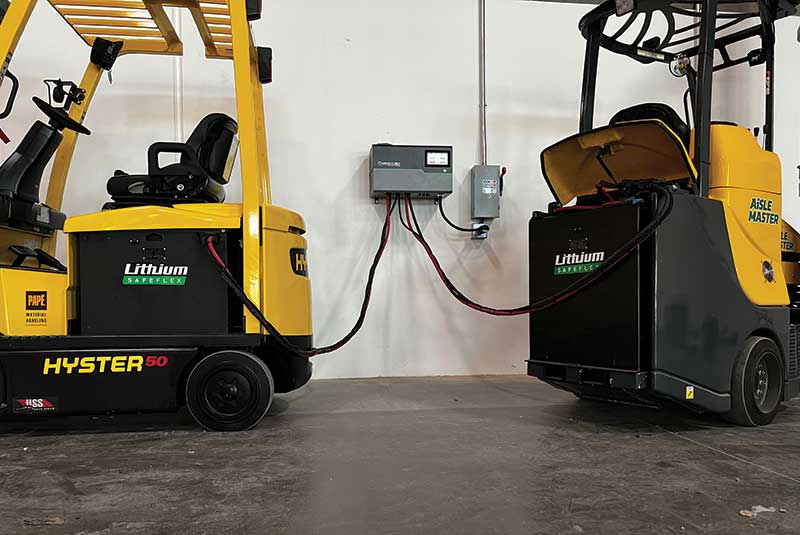
Just as lithium-ion is an alternative to lead acid, there’s a new lithium-ion chemistry that will be introduced at the Modex show this month, says Brian Barnett, chief technology officer at Nyobolt.
“Our niobium tungsten oxide (NWO) batteries are advanced lithium-ion chemistry capable of ultra-fast charging, high power density and long cycle life,” says Barnett. “The NWO chemistry is proprietary to Nyobolt and the outcome of research and development work by our founder professor Clare Grey,” adds Barnett.
On the operational side, the benefit of these NWO batteries is their ability to charge in 5 minutes. “We’re focused on mere minutes to charge the batteries not an hour,” says Barnett.
“This speed of recharging will become increasingly important as operations become more complex and stressed to keep inventory moving with only the smallest pause for battery recharging,” he adds.
And lithium-ion isn’t the only battery technology evolving to meet the needs of end-users. Recent lead-acid advances also address certain operational concerns. One increasing its following is thin-plate, pure lead (TPPL) technology.
“Though originally from mission-critical military applications, TPPL technology is really gaining popularity with materials handling operations,” says Vanasse of EnerSys. “It’s ideal for operations that don’t require the intense energy capabilities of lithium-ion, but still want to eliminate maintenance and battery rooms.”
More connected batteries
“We put energy in a box to drive equipment. But we also make it possible to have batteries, and chargers for that matter, talk to the equipment and talk to the cloud,” says Dutt of Flux Power.
In other words, there’s more to lithium-ion battery success than chemistry. Also critical are battery management systems, wireless and otherwise.
“Today’s commercial wireless charging capabilities are nothing short of staggering when compared to lead acid battery technology of a few years ago,” says Delta-Q Technologies’ Chergui.
He continues to say that wireless power transfer “eliminates the need for a direct, physical connection between batteries and the power sources that recharge them.”
Speaking specifically to AMRs and AGVs, Chergui says that once these robots return to a charging station “there is no need for direct intervention in their workflow or having someone on standby to plug them in.”
Delta-Q plans to introduce its RQ700 charger for Class 3 trucks. It is somewhat smaller than previous models and interfaces with lithium-ion and lead acid batteries on intelligent trucks (those with advanced telematics capabilities).
“Our goal has always been to provide a complete systems approach. With the introduction of the NexSys AIR wireless charger for AGVs, we provide operations a large amount of flexibility while automating charging,” says Enersys’ Vanasse.
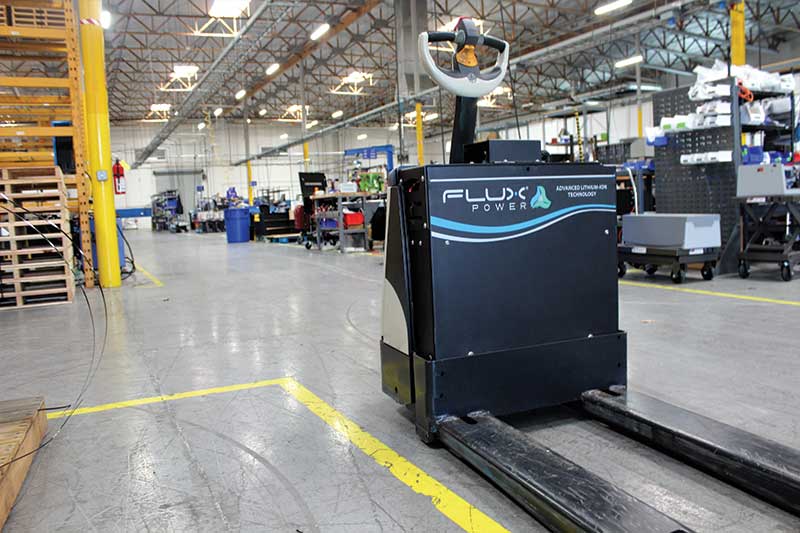
Battery management systems (BMS) are also part of this mix. As Dutt explains, they are all about taking raw data from telematics systems and translating it into actionable insights. Key metrics include charge levels as well as temperature and usage patterns. “Everyone wants this capability now,” says Dutt.
At Modex, Green Cubes Technology will announce its Lithium SAFEFlex PLUS line of batteries focused on modular design for improved serviceability and to facilitate certifications. Distributed battery management capabilities enhance datalogging for more efficient battery usage.
Vanasse says the future is all about a more connected battery. “Alerts, notices and feedback directly from the battery are key tools here,” he adds.
Bringing several of these developments together is Hyster’s Power Cellect option, says James Nielson, senior business product manager for motive power and electrification.
Power Cellect allows Hyster trucks to switch power sources from lead acid to TPPL and lithium-ion batteries without interrupting integrated communication between the truck and battery. Nielson says that this is a unique capability that maximizes flexibility in battery management.
Meanwhile, Raymond is scaling the battery management network beyond individual trucks.
At its own warehouse in Greene, N.Y., Raymond has built a battery energy storage system and solar microgrid that manages lift truck battery energy for an entire fleet, says Damon Hosmer, managing director for energy storage solutions.
Beyond Raymond, the project is funded by Binghamton University and the New York State Energy Research and Development Authority.
With the system installed, it’s now ready, he says, for the installation of advanced lithium-ion chargers. They will have proprietary software to balance microgrid battery charging for power optimization of individual lift trucks.
Hosmer continues to say that this is only a first step in developing a site-based comprehensive system for lift truck-to-grid charging. He describes it as a multi-year project.
With all of that said, it might time to check in again with those people measuring the battery charging room for future purposes. They may be on to something.
Article topics
Learn More


